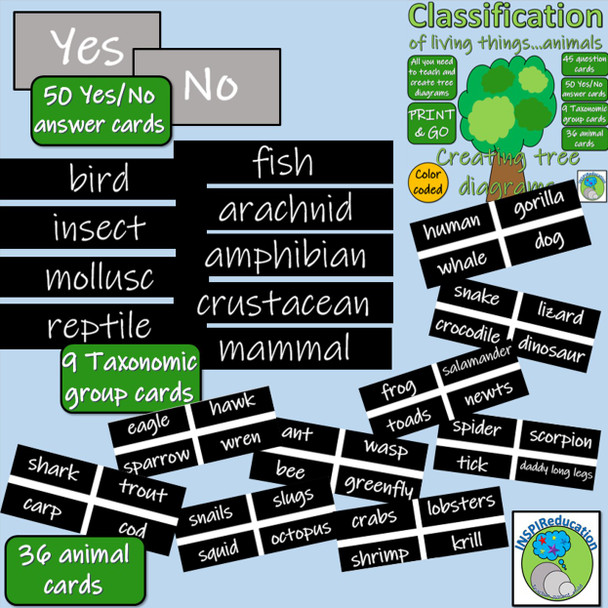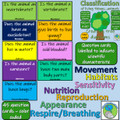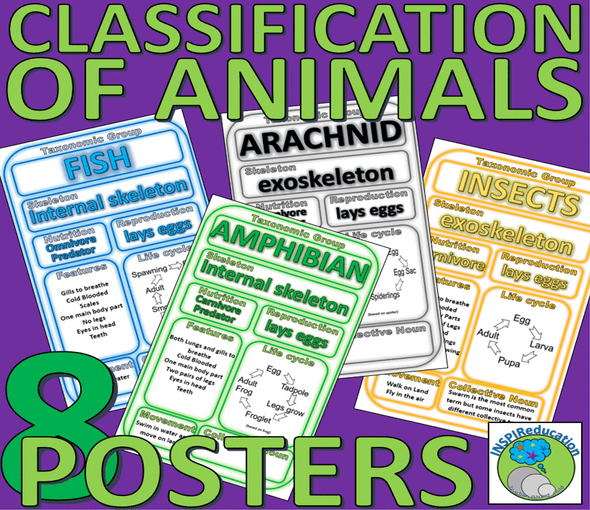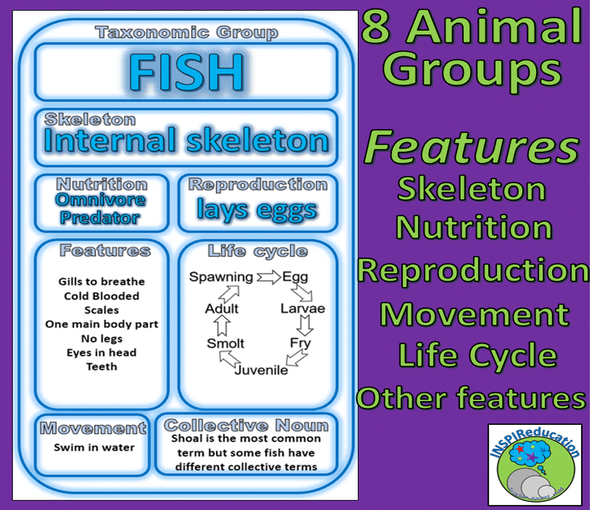Description
We have developed this resource over the past few years to support children in their knowledge of animal classification (both taxonomic groupings and animals within those groups) and their skills in developing yes/no questions to build a tree diagram.
Included within this product are 140 resources over 37 pages:
- 45 color coded questions cards
- 50 yes/no cards
- 9 Taxonomic Group cards
- 36 Animal Group cards.
Once purchased and downloaded, open the ZIP and open the main document.
Color print the document to benefit from the color coded question cards – 37 pages of resources and instructions.
To maintain the quality of the document when using on a regular basis, laminate each page to keep the resource in good condition for longer. This will also strengthen each of the cards without having to print on card.
Your resource is now ready for use.
When used in our classrooms, we have started with a whole class session. We have sorted each of the cards into their groups and shown the children what each card says.
As a starter, we provide the children with two different taxonomic group cards, for example mammal and reptile.
We ask the children to think of a question with a yes/no answer which will separate the two animals. For example: “Is the animal warm blooded?” This will provide a yes answer for mammal and a no answer for reptile.
Present this on a shared board for the children to see the tree diagram developing.
Now introduce a third animal group – insect.
Repeat the first question – is the animal warm blooded?
The answer is no, so insects will join reptiles.
The children should then be told that two animal groups cannot be together – so therefore they must think of another question to separate insects from reptiles.
For example: “Does the animal have three pairs of legs?”
This would answer yes for insects and no for reptiles.
The lesson can then continue until all 9 Taxonomic groups have been sorted using a range of questions.
Once the tree diagram has been completed, leave all of the questions in place and remove the taxonomic group names.
Can the children work out where each group label should go using the questions?
Next, leave the taxonomic groups in place with the questions. Introduce the animal name cards (there are four animals for each taxonomic group). Using their scientific knowledge, can the children place the animals in the correct positions on the tree diagram using the questions to help them?
Once the children are confident in their learning, the activity can be started all over again using different questions, or questions in a different order to separate the taxonomic groups. Then the animal names can be introduced.
Again, when confident, children can use the activity in groups to challenge one another:
- Who can make the largest tree using the most questions?
- Who can make the smallest tree using the least amount of questions?
- Who can complete the activity the fastest?
- Who can sort all 36 animal cards using the tree diagram?
- Who can create a tree independently?
Evidence of learning can be taken using photographs of achievements. Learning can also be placed on display boards so that classroom visitors can see how the children are developing their knowledge of animal characteristics and sorting skills using specific, scientific questioning to classify animals.
We have found that this activity has always been successful. It takes the laboriousness of writing out questions for the children, and if they want to add their own questions, they can make their own cards.
If you would like to develop your children’s knowledge of taxonomy and classification of living things (animals) further – why not view our Escape Room by clicking on the link below. It contains 10 activities which encourage children to research and develop their knowledge to solve 10 problems to support scientists all over the world. Great fun and a fantastic group activity.
Thank you for viewing our products.
Best wishes
INSPIReducation.


















